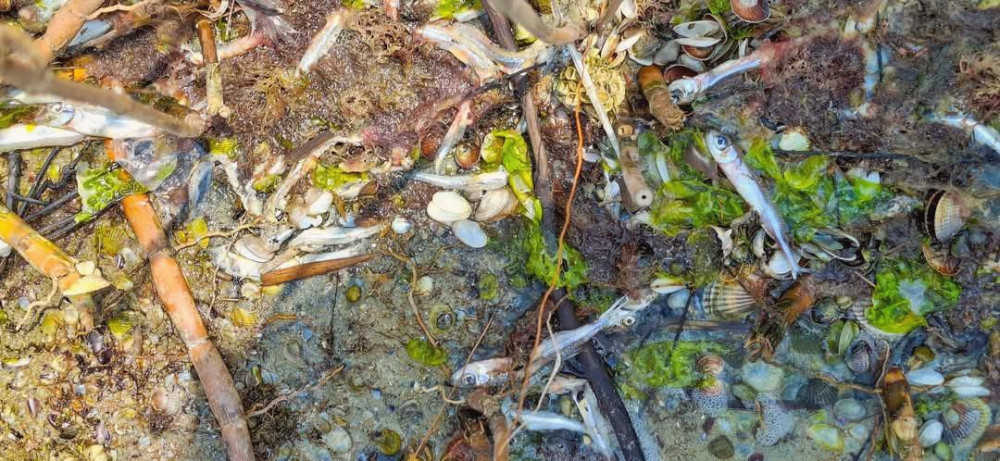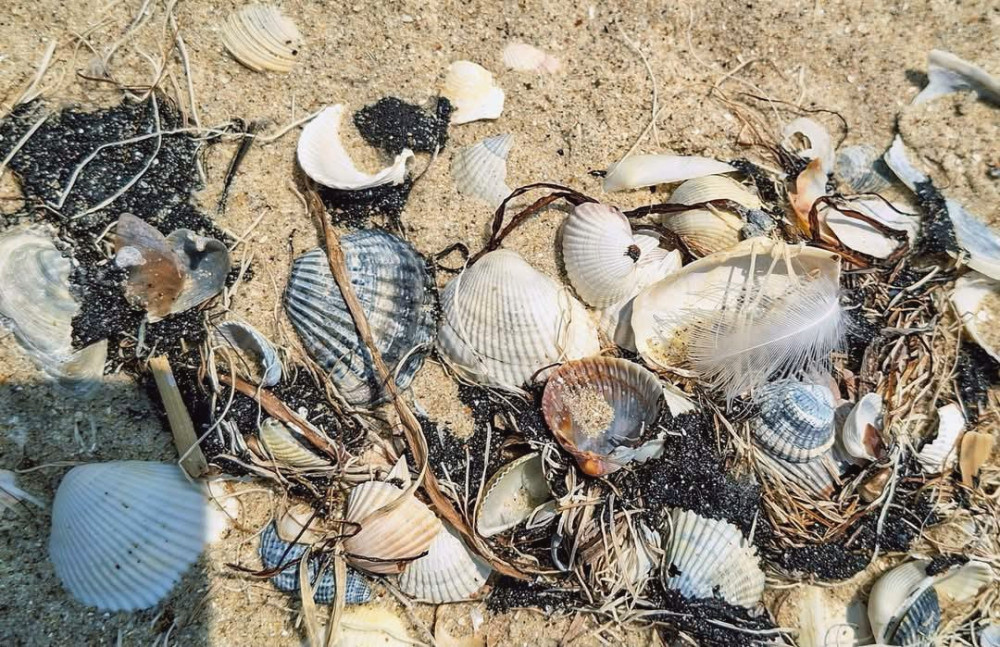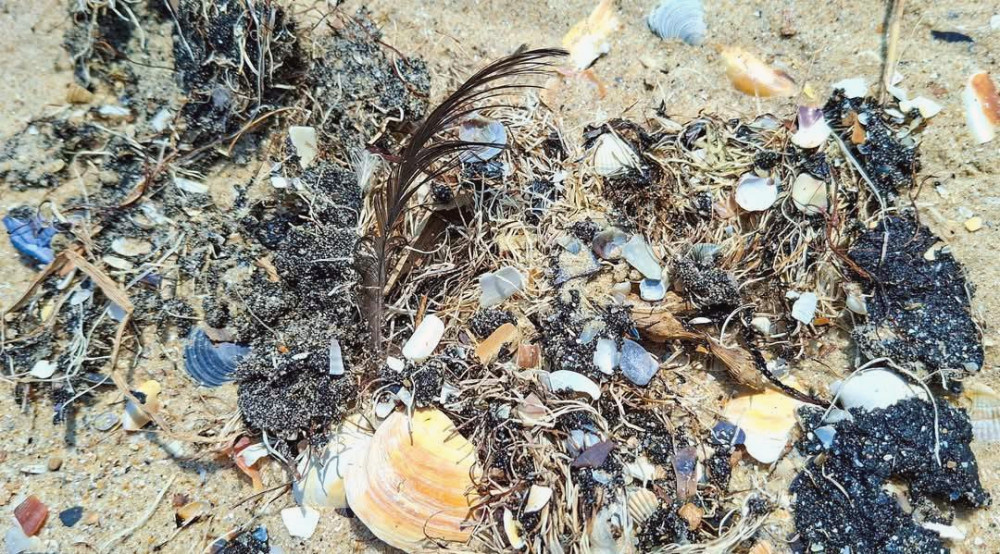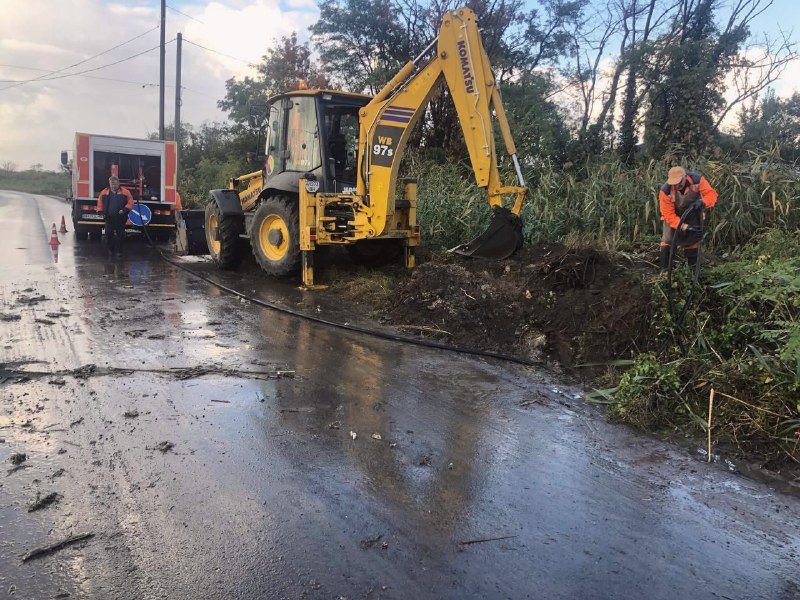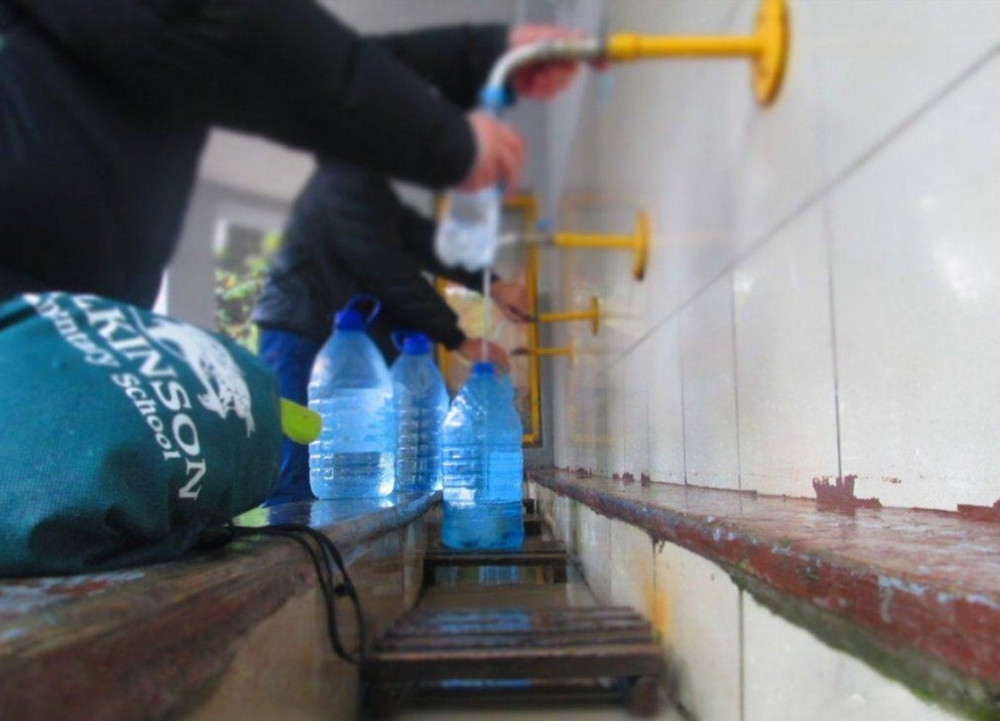Recently, staff from the national nature park "Tuzly Limans" conducted inspections of the Black Sea coastline within the park to identify contaminated areas resulting from the oil spill caused by Russian tankers on December 15, 2024, in the Kerch Strait.
Within the national park, a contaminated area of 2 km of sandy beach near the Tuzly Limans-Black Sea strait was discovered, where the sea had washed ashore fuel oil of varying fractions, amounting to a total weight of 1 kg. It was quickly collected as it was very soft due to the temperature of +30 degrees on the sand.
Interestingly, the fuel oil was predominantly washed ashore along with marine vegetation - seagrass and various shells. Strong winds and underwater currents had recently uprooted the seagrass from the seabed, where the oil had spread, and brought it ashore.
It is likely that fuel oil still exists along the Odesa coastline, but not all beaches are being inspected. Moreover, strong winds and sand shifts along the beach in recent days may partially cover it, and it dissolves within the sand, poisoning the sandy biocenoses.
The main portion of the fuel oil that could have reached the northwestern Black Sea region from the spill site on December 15, 2024, is now dissolving with the rising temperatures and "integrating" into the food chains of the marine ecosystem and the Tuzly Limans. Specifically, it has likely had a negative impact on the fish species atherina, which died and was washed ashore at the Bournas Liman near the mentioned strait along the 2 km sandy stretch.


